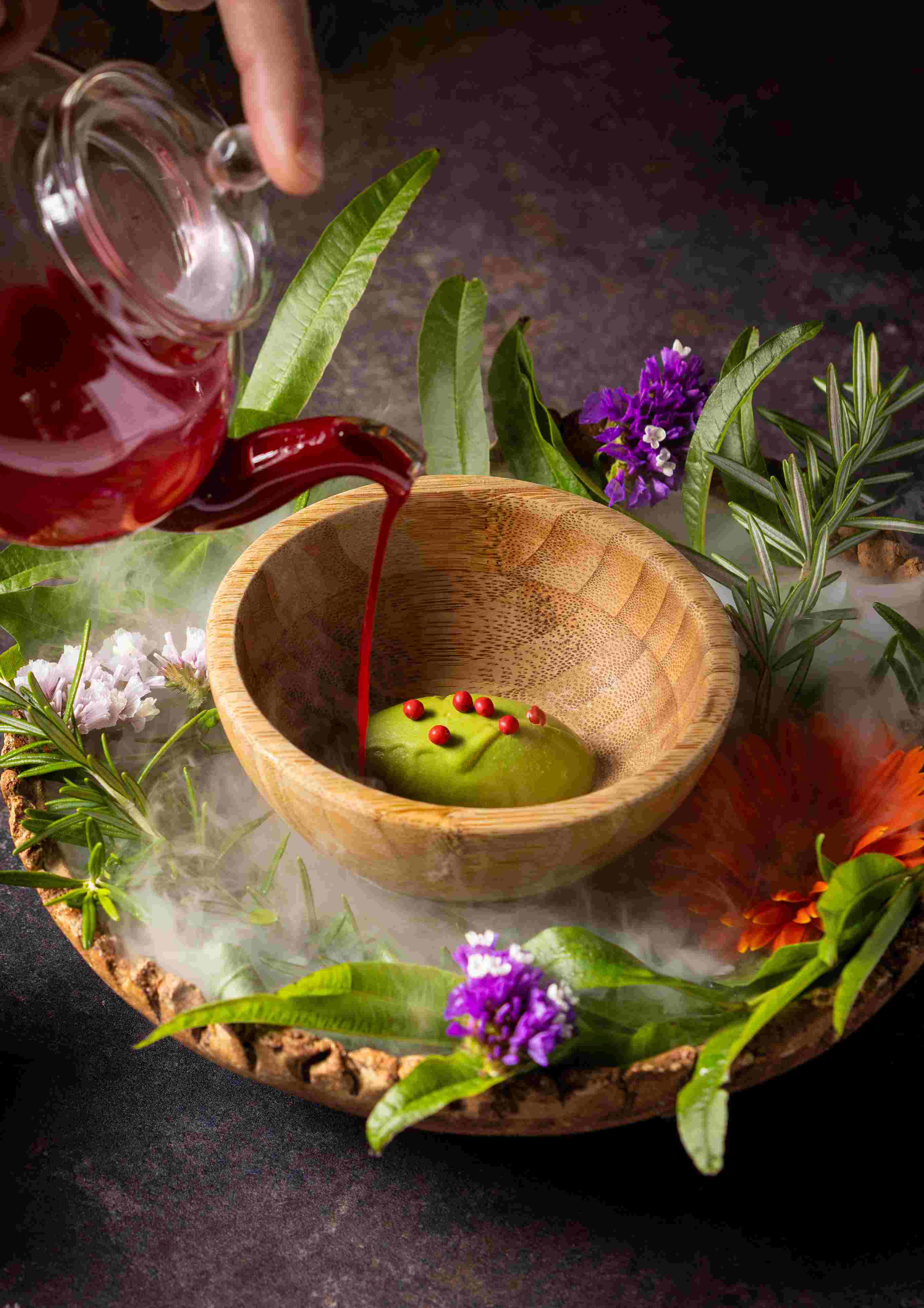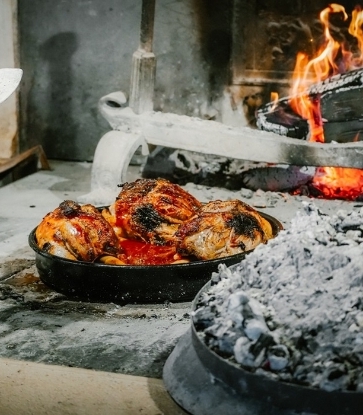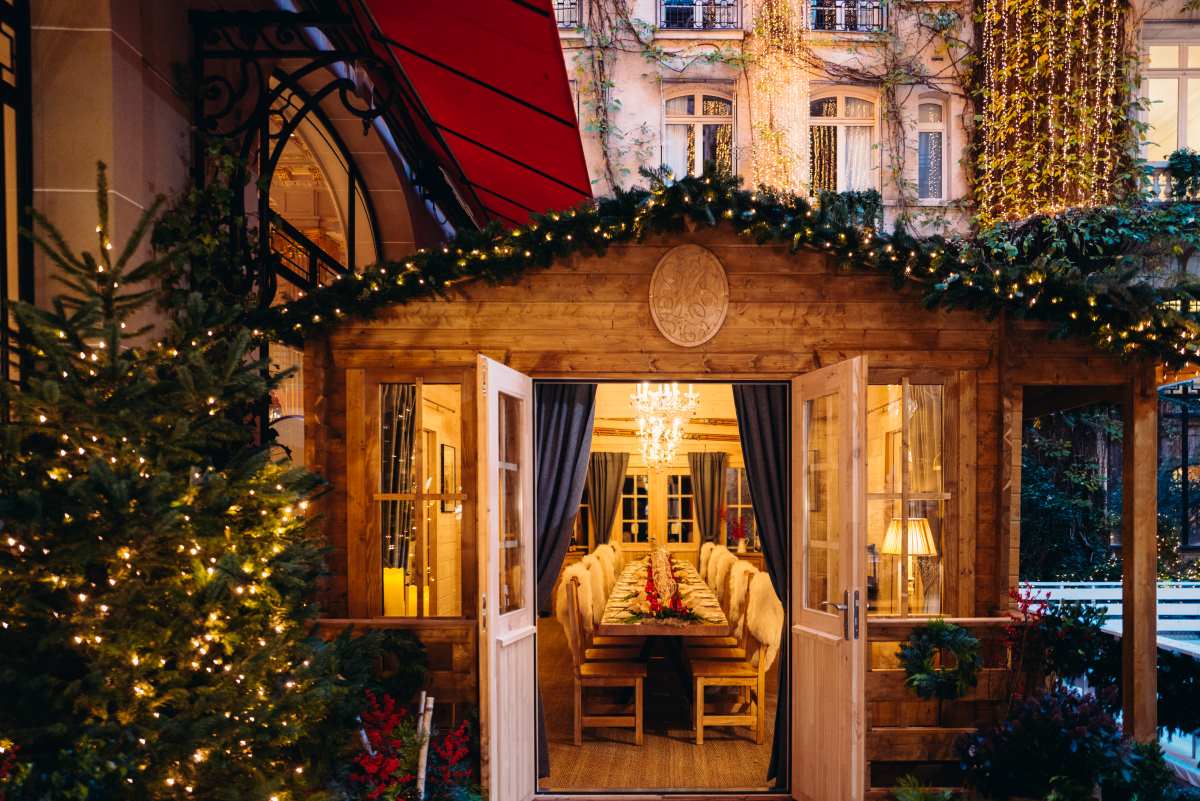A young chef in his late 20s, Dae Kim is forging his own distinct style that he describes as “ambiguous.” No stranger to making delicious food, he trained at Three MICHELIN Star per se before opening One MICHELIN Star Nōksu.
“Think of Asia, the deep mountain, the clean pure water streaming and flowing in between the mountain and over the valley. And then there's a flower, a beautiful plant growing out," says Chef Kim. "I want to be the flower. That's Nōksu. It's my passion [for] cooking, my journey, my life.“
Chef Kim's flower grew in an unusual location, underneath Koreatown within Manhattan's subway system. Located in a secret space protected by a key code, each dish blossoms over a chef’s counter that flows like a stream.
Chef Kim believes Nōksu can serve as the “front door” to Koreatown. “I’m very lucky, very happy to build a restaurant in the subway station. Subway stations are beautiful,” he says. “Iconic New York City culture is from [the] subway. People sing, people [dance] around, culture mixing – it all starts from here. [The] New York subway is an iconic thing, why not build an iconic restaurant there?”

Nōksu activates every sense. Each course is visually exciting, most memorably the sunflower-shaped surf clam steamed egg, decorated with crispy potatoes and Kaluga caviar. The dishes are complemented with thoughtful wine pairings and creative mocktails, enjoyed over a pleasant throwback 80s music playlist.
Kim’s personal favorite course is the mackerel. It begins with Japanese shime saba preparation. “Shime means we marinate in vinegar, saba is mackerel. We salt it for a couple of hours. We cure it, marinate it in our own vinegar, age for about two to three days, so there's a nice layer of umami.” Then come French techniques. “We poach lightly in a housemade caramelized ginger oil,” with a carrot sauce and caramelized onion demi glaze. It’s served with Chinese celtuce compressed in perilla oil. He praises the crispness of celtuce and calls perilla the “most delicious ingredient in Korea.” In a final form that’s shaped like a jellyfish, the course is served on a whimsical jellyfish plate.

The menu features two game meats: venison and squab. “Our barbecue squab dish is [inspired] by walking in New York City. My favorite place to go is Chinatown. You always see Chinese barbecue chickens all hanging out on the ceiling.” Even though he must adapt to subway cooking limitations, Kim seamlessly adopts Chinese-inspired techniques of marinating, aging, smoking and frying. The sauce draws elements from French Salmis de Pigeons and Korean gochujang (spicy fermented bean paste). The course is served with a duck offal (organs) truffle bao bun and a shot of Korea-brewed, German-style beer.
His twist on Chinese cuisine draws from his time with chef Simone Tong. “Tong [taught] me a lot, opened a different side of my eyes. Chinese cuisine is the root of a lot of Asian flavor profiles.” He had always wanted to learn more about stinky tofu, and he took the leap after reading the book ‘Tacos’ by Chef Alex Stupak of MICHELIN-recommended Empellón.

Kim was born in Korea, moved to America at fourteen and has always sought to expand his global culinary knowledge, from Korean to French, Chinese to Japanese. Ingredients are sourced both locally and globally, including venison from upstate New York, squab from California, fish from Japan, scotch bonnet peppers from Nigeria and cardamom from Ethiopia.
“[People] try to make very complex, fancy words, but at the end, it’s fusion. I'm a very ambiguous individual. I adopt different cuisines, my former backgrounds,” he explains. “Classically, I'm trained in French cooking. All my Korean knowledge is from my childhood memories. I never think that because I’m Korean, I have to put kimchi on the menu. The more you’re thinking about that, your food is getting cloudy.”
Before that, Kim trained at Three MICHELIN Star per se. “per se was definitely the [hardest] restaurant in my life, a great restaurant to change yourself. per se shows discipline and a sense of urgency in fine dining,” he describes. “The people who surround me all inspire me, push me, motivate me. I want that awesome culture here.”
I ask him about the rise of Korean flavors in fine dining, and he explains, “Our first generation chefs made the foundation really strong,” giving credit to Chef Hooni Kim of Meju and Chef Jungsik Yim of Two MICHELIN Star Jungsik. He also praises Chef Sungchul Shim of One Stars Kochi and Mari, Chef Douglas Kim of One Star Jeju Noodle Bar and Chef Junghyun Park of Two Star Atomix.
With determination, he says, “I respect them a lot. They're the pioneers of the Korean fine dining scene. All of these chefs were building this whole thing for us. Compared to them, I’m still a baby. They all proved it. I didn’t prove anything yet.”
Hero image: Brynne Levy/Nōksu
Thumbnail: Alex Truong/Nōksu





















